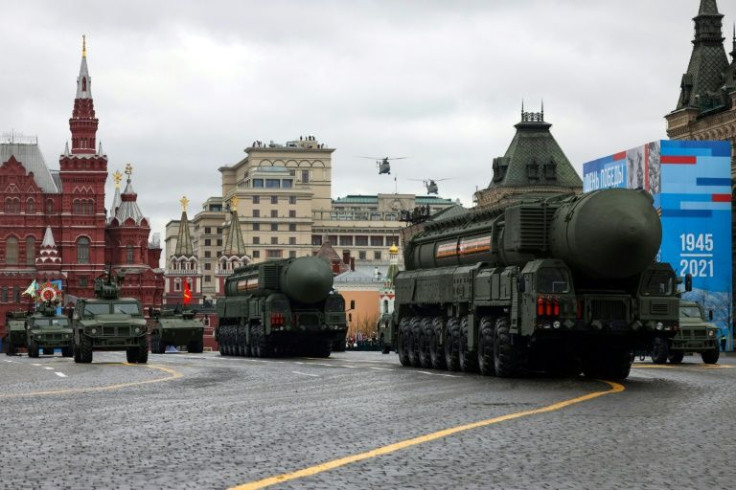Russia Is Developing Carrier-Killer Hypersonic 'Zmeyevik' Missiles: Report
KEY POINTS
- The missile could enter service with coastal missile units of Russian Navy
- Zmeyevik system will likely be stationed on coastline to take on enemy ships
- It will be launched from a large truck, which helps protect more territory
Russia is reportedly developing a new "aircraft carrier killer" missile, Zmeyevik, which many say can pose a threat to NATO and U.S. vessels.
According to sources, the missile resembles the Chinese DF-21D and DF-26 anti-ship ballistic missiles.
"The Zmeevik ballistic missile with hypersonic combat equipment has been in development for quite a long time. It will be designed to destroy large surface targets, primarily aircraft carriers," Russian News Agency TASS reported.
The missile could possibly enter service with coastal missile units of the Russian Navy.
The Zmeyevik system will likely be stationed on the coastline to take on enemy ships that threaten Russian shores. A report by 1945 said the system would integrate with a network of submarines and missile frigates. It would likely be launched from a large truck, the mobility being an advantage. This will help Zmeyevik change position for better launch points and thereby protect more territory.
Zmeyevik, like the Chinese DF-21D and DF-26, will have a range of up to 4,000 km (2,485 miles). It also reportedly has modern capabilities, including a hypersonic glide vehicle used during its terminal phase.
According to Dmitry Stefanovich, a research fellow at the Center for International Security, the project looks like it was "under development for a while, although there were no tests mentioned or observed, which, of course, does not mean that a prototype test could not have happened," The Drive reported.
"Making fast anti-ship missiles is quite traditional for the Soviets and Russians, and a ballistic missile is a good option," he added, while pointing out drawbacks.
"Given its range and speed, one needs serious ISR [intelligence, surveillance, and reconnaissance] and targeting capabilities, and also terminal guidance. Maneuverable reentry vehicles and hypersonic glide vehicles as a subtype of those make perfect sense to be a primary payload type in this case, however, there are obvious gaps in Russian ISR capabilities," he added.
Despite this, many believe Zmeyevik, a land-based hypersonic long-range missile, will be an asset for Russia to enhance anti-access/area-denial (A2/AD) strategy.
That said, TASS did not give the current status of the Zmeyevik’s development. The efforts to get the response of NPO Mashinostroyeniya, the rocket design bureau of Russia, did not yield results. The company was also the manufacturer of Zircon hypersonic anti-ship missiles for surface warships and submarines and the Onyx supersonic missiles.

© Copyright IBTimes 2025. All rights reserved.





















